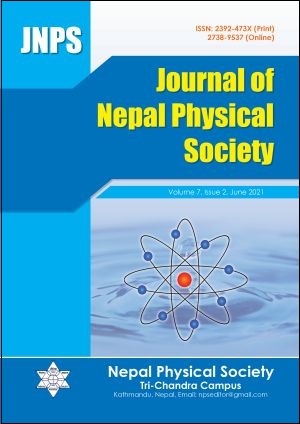Estimation of Solar Energy Using Different Empirical Models at Mid Hill, Nepal
DOI:
https://doi.org/10.3126/jnphyssoc.v7i2.38621Keywords:
Global Solar Radiation, Sunshine hours, Regression technique, Empirical constants, Statistical toolsAbstract
Accurate knowledge of global solar radiation distribution is essential for designing, sizing, and performing an evaluation of solar energy system in any part of the world. However, it is not available in many sites of Nepal due to the high expense of the technical process. This study is focused on the performance of different models based on daily global solar radiation, sunshine hour, temperature, and relative humidity at mid-hill region Lumle, (lat. 28.29650N, long. 83.8179oE, and Alt. 1740.0 m.a.s.l.). This study is carried for the year 2018 to 2020. The performance of different models based on sunshine hour, temperature, and relative humidity were analyzed using the regression technique and statistical tools such as Root Mean Square Error (RMSE), Mean Bias Error (MBE), Mean Percentage Error (MPE), and Coefficient of determination (R2). After the analysis, the modified Angstrom model (M-9) based on temperature difference and relative humidity was found to be the best in terms of accuracy of least RMSE value and highest coefficient of determination. Finally, the empirical constants for model m-9 are a = 0.003, b = 0.523, c = 0.118 and, d = 0.002 obtained. The calculated empirical constants can be utilized for the prediction of GSR at similar geographical locations of Nepal.
Downloads
Downloads
Published
How to Cite
Issue
Section
License
All right reserved. No part of this Journal may be reproduced in any form or by any electronic or mechanical means, including information storage and retrieval system, without permission in writing from the publisher, except by a reviewer who may quote brief passage in a review. The views and interpretation in this journal are those of author(s) and they are not attributable to the NPS.




